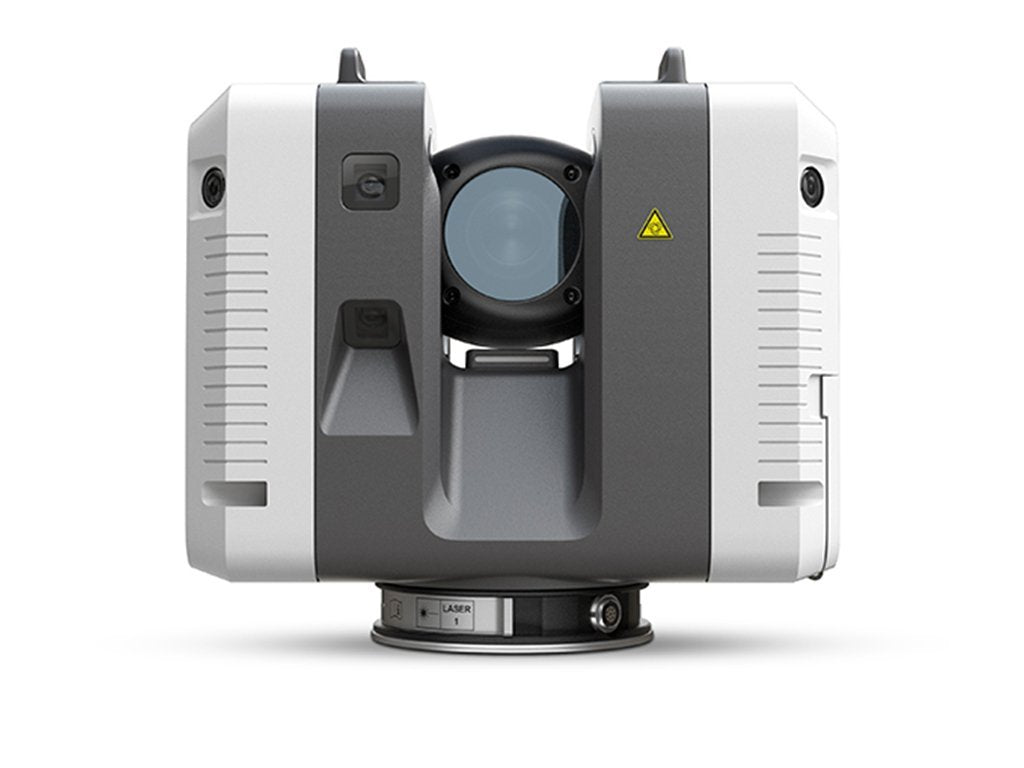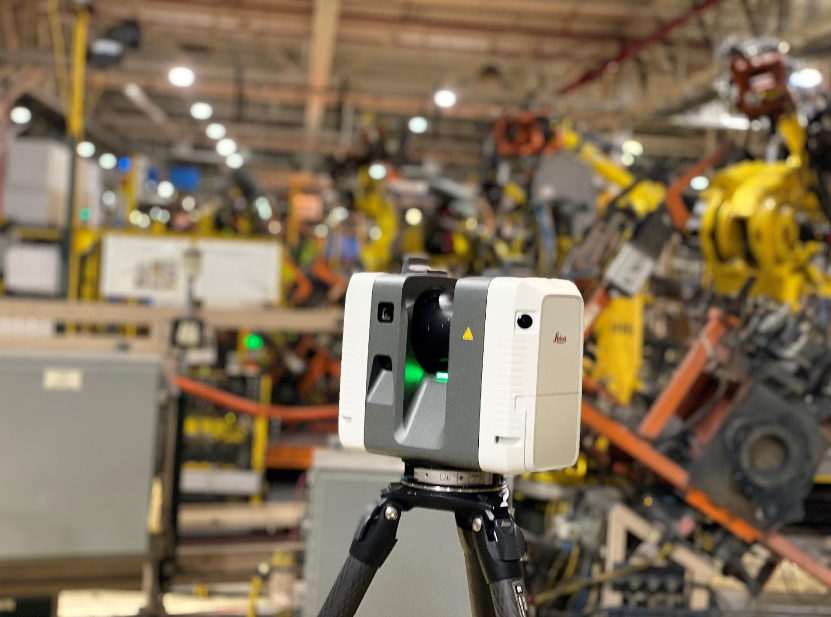The Future of Precision Dimension: Understanding the Function of 3D Laser Scanning Modern Technology
The landscape of precision dimension is developing with the introduction of 3D laser scanning innovation. This innovation guarantees enhanced precision and effectiveness across numerous fields. As industries start to accept these innovations, the effects for task monitoring and execution come to be increasingly considerable. Nonetheless, the transformative impacts of this modern technology expand beyond mere numbers and measurements, meaning a wider change in exactly how specialists approach their job. What might this imply for the future?
What Is 3D Laser Scanning Innovation?
3D laser scanning modern technology is an innovative method used to capture precise three-dimensional measurements of physical objects and environments. This technology utilizes laser beams to gather information factors, which are after that refined to produce in-depth electronic representations of the scanned subjects. By giving off countless laser pulses per second, 3D laser scanners can accurately record the form, dimension, and spatial connections of different surfaces.
The procedure generally involves positioning the scanner at various viewpoint to capture comprehensive data. The resulting factor cloud, a collection of numerous information points, can be evaluated and exchanged 3D designs. Applications of this innovation span multiple areas, consisting of heritage, architecture, and engineering preservation, where it aids in documentation and evaluation. As a non-intrusive technique, 3D laser scanning reduces disturbance to the environment, permitting complete evaluations of both existing structures and all-natural landscapes, thus boosting understanding and promoting educated decision-making.
Secret Conveniences of 3D Laser Scanning in Different Industries
3D laser scanning modern technology supplies substantial benefits across different sectors by providing enhanced accuracy and precision in measurements. This technology not only simplifies workflows however likewise leads to significant time and cost savings. As organizations significantly adopt this ingenious approach, the benefits become obvious in boosted project end results and performances.
Enhanced Accuracy and Precision
The combination of laser scanning innovation has actually revolutionized the method markets approach dimension and data collection. This innovation gives an unmatched level of accuracy, catching millions of data factors in a single check. Consequently, professionals throughout various areas, such as style, production, and design, can develop highly described 3D designs that show real-world problems. Improved precision decreases mistakes connected with conventional measurement approaches, guaranteeing that constructions and styles are based upon accurate data. Additionally, the capacity to capture elaborate details permits for much better analysis and decision-making, eventually bring about improved end results. By leveraging 3D laser scanning, sectors can attain greater requirements of quality, making it an indispensable tool for precise measurements.
Time and Cost Effectiveness
Efficiency in time and expense is a considerable benefit offered by laser scanning modern technology, transforming task implementation throughout various markets. By rapidly capturing thorough 3D information, laser scanning decreases the time invested in hands-on dimensions and minimizes the risk of mistakes. This speedy information acquisition assists in much faster decision-making and job timelines, enabling teams to allocate resources better. Additionally, the modern technology decreases the demand for rework, as precise versions cause much better planning and execution. Industries such as construction, design, and making benefit considerably, seeing reduced prices connected to labor and materials. In general, 3D laser scanning not only boosts functional performance but likewise adds to considerable financial savings, making it an indispensable tool in today's competitive landscape.
Applications of 3D Laser Scanning in Style and Construction
As building and building jobs grow progressively complex, the fostering of laser scanning innovation has become a transformative service. This innovation provides exact measurements and thorough 3D representations of existing frameworks, facilitating even more precise preparation and design procedures. Engineers make use of 3D laser scanning to develop electronic versions that capture intricate information, guaranteeing that remodellings and brand-new constructions line up perfectly with existing conditions.

The Duty of 3D Laser Scanning in Manufacturing Processes
3D laser scanning plays a crucial role in producing processes by boosting image source quality assurance through precise measurements and information collection. This technology permits manufacturers to identify disparities early, decreasing errors and waste. Additionally, it streamlines production process by promoting far better communication and coordination among teams.
Enhanced Quality Assurance
Quality assurance in producing processes has actually been transformed by the combination of laser scanning technology. This innovative strategy enables specific measurements and in-depth assessments of elements, making certain that they fulfill stringent high quality standards. 3D laser scanning catches elaborate geometries and resistances, making it possible for makers to identify variances from design specs quickly. This innovation significantly lowers human error connected with standard dimension methods, supplying consistent and trusted data. By facilitating real-time quality control, it enables proactive modifications in the production procedure, eventually resulting in boosted product dependability and client satisfaction. As industries significantly take on 3D laser discover this info here scanning, the possibility for better quality assurance comes to be noticeable, noting a transformative change in manufacturing techniques.
Structured Production Operations
Reliable production workflows are significantly taking advantage of the integration of laser scanning innovation in manufacturing procedures. This technology enables for fast, exact measurements of settings up and components, substantially lowering the time needed for arrangement and modifications. By capturing accurate geometry, makers can rapidly determine inconsistencies between design requirements and actual products, making it possible for instant restorative activities. Additionally, 3D laser scanning helps with the seamless transfer of data between style and manufacturing teams, enhancing partnership and minimizing mistakes. The innovation also sustains electronic twin production, enabling for real-time tracking and optimization of producing procedures. Therefore, companies can attain higher performance, reduced waste, and enhanced overall efficiency, inevitably driving competitive advantage in the marketplace.
Protecting Heritage: How 3D Laser Scanning Aids Cultural Preservation
As social heritage websites deal with the danger of degeneration and destruction, cutting-edge innovations such as laser scanning arise as vital tools for conservation initiatives. 3D laser scanning records detailed information of historic structures and artifacts with exceptional precision, producing electronic models that offer several purposes in conservation. These designs permit precise documentation of present conditions, enabling experts to keep an eye on modifications over time and evaluate damage threats.
In addition, laser scanning facilitates online remediation, assisting conservators create prepare for repair work or recreating lost components without invasive techniques. The modern technology also helps in informing the public, supplying immersive experiences through online trips that highlight the importance of these websites. By incorporating 3D laser scanning right into cultural conservation methods, stakeholders can assure that heritage is protected for future generations while enhancing understanding and appreciation of historical contexts.
The Future Expectation: Innovations and Patterns in 3D Laser Scanning Modern Technology
Though 3D laser scanning innovation has actually currently transformed numerous markets, its future pledges also better advancements try this web-site that will improve accessibility, speed, and accuracy. Emerging fads suggest a boost in assimilation with expert system and artificial intelligence, leading to smarter data handling and evaluation abilities. This harmony will certainly enable quicker decision-making and more exact end results in fields such as heritage, engineering, and building conservation.
Innovations in equipment are anticipated to yield lighter, much more portable scanning tools, democratizing access for smaller firms and specific specialists. As software application remains to develop, easy to use applications will certainly streamline complex workflows, making 3D scanning a lot more obtainable to non-experts
The rise of cloud-based solutions will certainly help with real-time cooperation and data sharing among stakeholders, paving the means for streamlined project management. Collectively, these patterns signify a future where 3D laser scanning modern technology ends up being an essential device in an even more comprehensive range of applications.
Regularly Asked Concerns
How Much Does 3D Laser Scanning Technology Expense?

What Are the Abilities Called For to Run 3D Laser Scanners?
Running 3D laser scanners requires technological effectiveness, interest to detail, spatial understanding, expertise of software application for information handling, and an understanding of checking principles. In addition, solid analytical abilities and analytical abilities are essential for effective procedure.
Can 3D Laser Scanning Incorporate With Other Technologies?
Yes, 3D laser scanning can integrate flawlessly with various other technologies, such as Geographic Details Systems (GIS), Building Info Modeling (BIM), and enhanced truth, boosting data precision and promoting enhanced evaluation across various sectors and applications. - 3D Scanning
What Is the Regular Scanning Variety of These Gadgets?
The typical scanning range of 3D laser scanning gadgets differs commonly, generally in between 50 meters to over 1,000 meters, relying on the model and application, influencing their suitability for various precision measurement tasks and atmospheres.
Exactly how Lengthy Does a 3D Laser Scanning Project Take?
A 3D laser scanning job usually takes anywhere from a few hours to several days, depending upon factors such as task size, complexity, and called for detail. Each task's timeline can vary considerably based on these elements.
The landscape of precision measurement is progressing with the development of 3D laser scanning modern technology. 3D laser scanning innovation is an innovative approach used to record precise three-dimensional dimensions of physical objects and atmospheres. 3D laser scanning modern technology offers significant benefits throughout numerous sectors by offering enhanced precision and precision in dimensions. 3D laser scanning technology has actually currently changed various industries, its future pledges even higher developments that will certainly boost accuracy, rate, and access. 3D laser scanning innovation generally sets you back between $10,000 and $100,000, depending on the equipment's capacities and features.